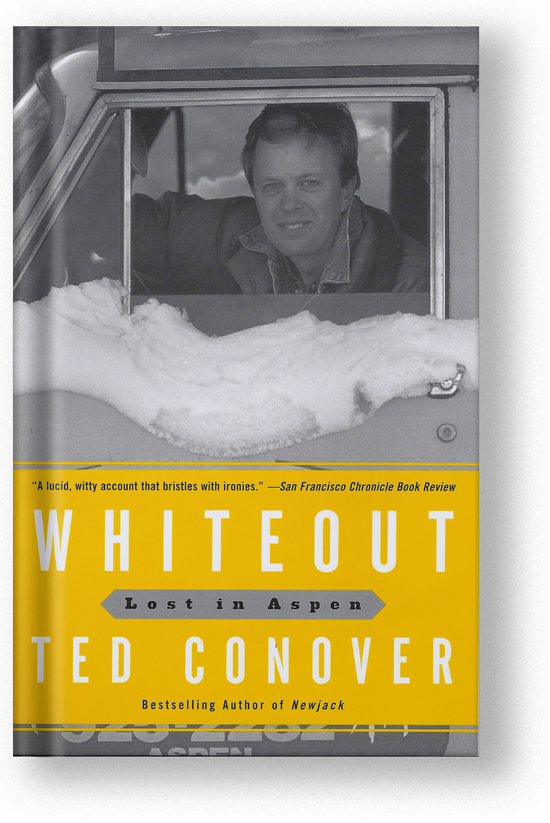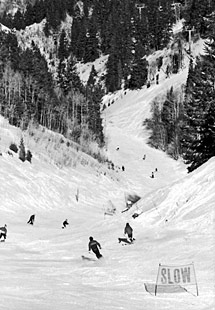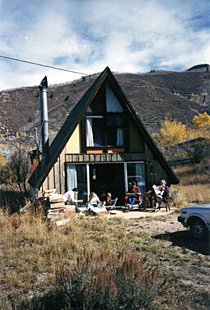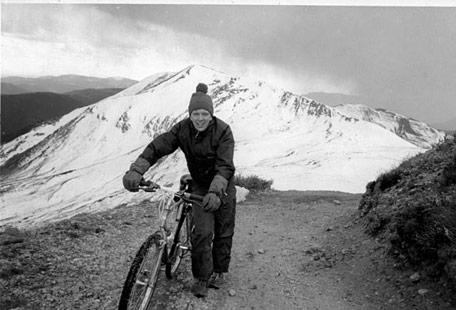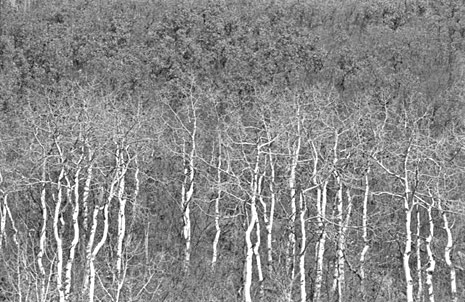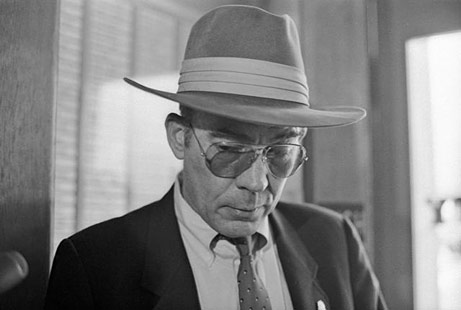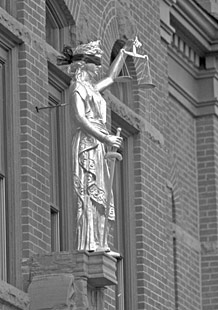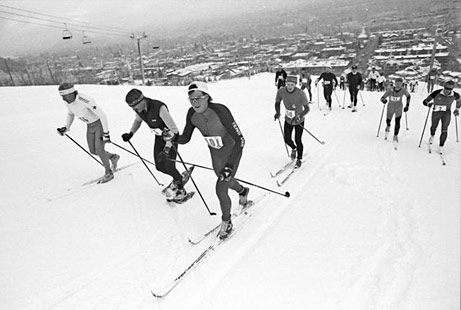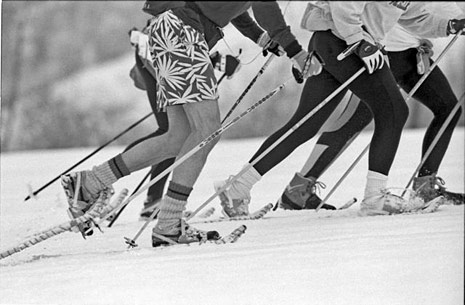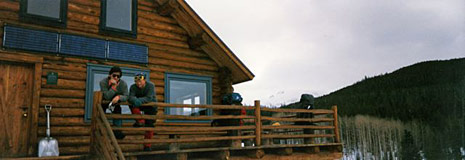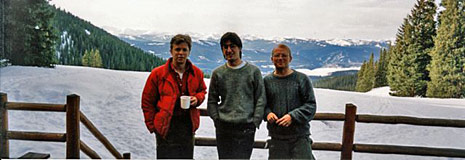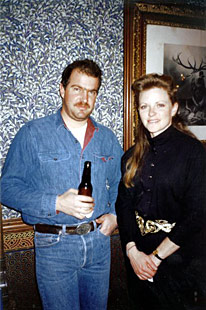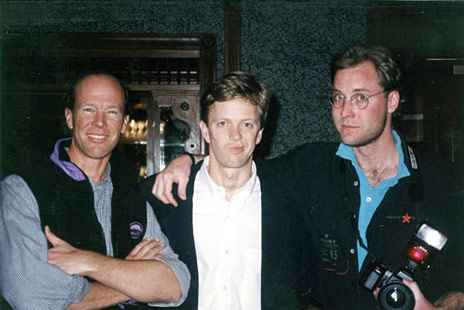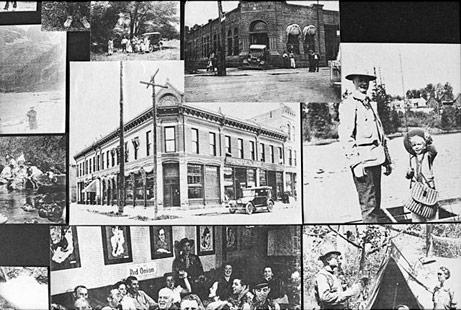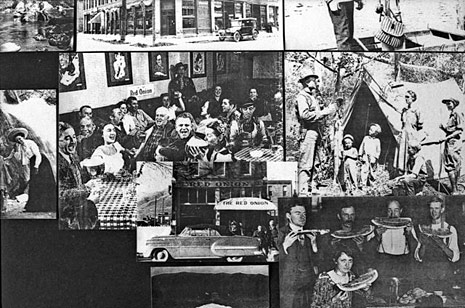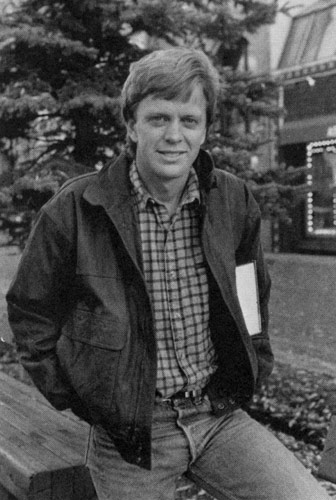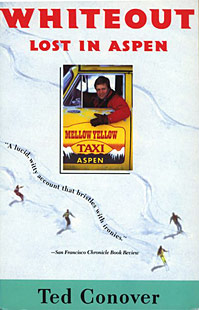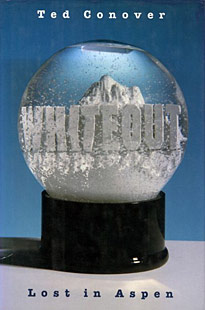It was almost the last of the Aspen A-frames. It may also have been the first of the Aspen A-frames.
The place in Aspen where I hung my hat the longest was an aging, forgotten house at the foot of Red Mountain, just above the art museum, where I lived for nearly a year. Named for its shape when viewed head-on, the A-frame had a front door of sliding glass; you stepped through it and directly into the living room, beyond which were the kitchen and bathroom. Upstairs were two bedrooms. Aspen once had several of these staples of American snowcountry architecture, but most were torn down to make room for larger, sturdier houses. There were two modified, expanded A-frames left around town, but I found only one other that was “pure.”
Though it was on a well-traveled street and they passed by frequently, nobody could ever remember having seen my house. This had probably helped in the long run: The house, through benign neglect, had only improved. In an area of paved driveways, it had a strip of rutted dirt. Amidst the sprinkler systems and landscaping of my neighbors, my house boasted native vegetation: sagebrush and tumbleweeds. The outside light was a meager yellow bulb, such as might be found outside a fisherman’s bungalow. A rusty horseshoe hung over the front door. The key was hidden in the woodpile.
Located on a capacious comer acre of prime real estate, my A-frame, by all rights, should have been bulldozed and replaced years before. It was a living anachronism. But my landlords were two old Denver families that had bought it from three bachelors who built it in the fifties, and they planned to keep it indefinitelynot, I got the sense, through any abiding love of the antique, the funky, the soulful, not as any statement of rebellion against the status quo, but more through the power of inertia. They had it, and they would continue to have it. They’d sell it when they needed to and the profit was guaranteed: They’d bought the place for $14,000, and the land above had appreciated to about $800,000. In the meantime, they rented it all year long, and except for high season, a few weeks on either side of Christmas, it was mine.
I became the house’s umpteenth tenant when one of the owners, a woman who knew me from my childhood street, walked into the Times one day to place a rental ad.
“Why, it’s Teddy Conover!” I heard a voice say. She was a Denver landlady of some repute, savvy in that market but less so in Aspen’s; she was preparing to rent the two-bedroom house for the unheard-of sum of $600 a month.
The house had, as they say, character. Outside, it was stained green, with a green tarpaper roof. Four wooden panels above the front door, once an eye-catching orange, yellow, green, and red, had faded and chipped as a result of their southern exposure. Some loose component of the tubular metal fireplace chimney banged in the wind.
The decor was early ski house: indoor-outdoor carpet, a ski rack against one wall, dormitory-style furniture, framed posters hung against wood-veneer paneling. It had been updated in the seventies with cheap track lighting and rheostats, but otherwise it was intact. The kitchen in particular was an original: Separated from the rest of the living room by a curving bar finished in ruby-red Formica and ringed with bar stools, it sported, in matching yellow enamel, a decrepit Whirlpool dishwasher, metal cabinets and, best, an antique refrigerator built in above the counters as a faux-cabinet. The refrigerator, alas, was a decorating idea whose time had come and gone; its everyday operation was to freeze or melt everything; it could not be repaired (though servicemen charged you for trying). A baking pan sat permanently stationed beneath the dishwasher, to capture the overflow from the rinse cycle. A stereo so old it had to warm up came with the place, as did a dial phone; labels on the stereo directed the guest to frequencies for radio stations that no longer existed. A game cabinet contained a twenty-year-old board game, modeled on Monopoly, called Aspen, in which every space was a business-but only five or six of these still existed. A fifteen-year-old phone book contained similar revelations about the transiency of Aspen’s commercial sector: Gone were ten of the first dozen restaurants listed in the Yellow Pages, all of the boutiques, and all of the gift shops.
The A-frame could sleep eight people, assuming only one per single bed. Five of these would be upstairs, which you arrived at by climbing a wobbly, splintered ladder. From an upstairs bed, the floors were so thin you could hear conversations in the living room beneath you as though nothing intervened. The forced-air heat did not make it upstairs; auxiliary electric floorboard units had been installed, which the landlady (because she would have to pay for it, through an arcane metering arrangement) implored me to use “only when absolutely necessary.” I restricted my use to only most mornings and most nights.
Through the large front windows, there was a spectacular view of Aspen Mountain, Shadow Mountain, the lower valley-and of a large house under construction across the road. The “spec” house, which actually had been completed two years before, had been sold to an owner who wanted a complete rehab. It was undergoing renovations the entire time I was there. Fortunately, most of the house was located down a steep hill from me, out of sight, but its most persistent flaw sat in full sight. This was, namely, a sod roof, an expensive New Age whimsy, which refused to stay green. Over the course of the spring, summer, and fall, I watched the brown, dead grass get replaced with new sod, receive a watering three times or so a day, slowly die, turn brown, and then get replaced once again-for a total of three times during my residency. In an act of desperation, the contractor installed a lawn-sprinkler system, halfway through, on the roof. Of course, the grass still died. All this spectacle I took as a vindication of my simple house. Even when three days of gale-force winds tore off a piece of my tarpaper roof and subjected my books to a drenching from the rain, the cure was simple: I went out, found the blown-off tarpaper a block away, and nailed it back on. Still, the roof saga was a small compensation for the irritation of heavy machinery starting at 7 A.M., workers’ trucks blocking my driveway, the dust, the pounding, the semitrailers-the gamut of problems familiar to anyone who has lived next to construction. Summer, regardless of what others may tell you, is above all truck season in a booming resort town.
I felt the contractor had gone too far when I awoke one morning to the sight of three men in white protective suits rooting through my sagebrush. It was like a scene from an aliens movie: They wore respirators and seemed to be taking soil samples. When they returned the next day with a big machine that drilled into the ground, I confronted them. They responded with a sheaf of literature-they were from the Environmental Protection Agency, it said, searching for heavy metals in the soil that could have been left from tailings at Stefan Albouy’s Smuggler Mine, a short way up the hill from my house. Superfund legislation, if contamination was found, would pay for them to remove all the soil and replace it with good, uncontaminated soil.
My landlady phoned me a short while later to tell me the news: The soil around the house was contaminated, but she had declined the offer to dig up the entire lot and had settled, instead, on the plan to “stabilize” the “area of greatest exposure.” They were going, in other words, to pave the driveway free. She sounded delighted, but I was not: If the developers didn’t get you, the government would. The work had been scheduled, but not completed, when I moved out one snowy day in November, one step ahead of the “improvements.”
